Irish pop-rock icons U2 once sang Two Hearts Beating As One, a phenomenon that is foreign to none of us, but in watchmaking we call it: resonance! And only a handful of watchmakers can master resonance, one of them being Armin Strom! The concept of resonance is far from new, being a discovery by Dutch mathematician, astronomer and engineer Christiaan Huygens. However, it took centuries for us to fully understand the concept and implement it in a wristwatch, and this is where Armin Strom comes into play. As he launched his brilliant Mirrored Force Resonance in 2016, Armin Strom now imagines what such a watch looked like back when Huygens made his discovery, leading to this fascinating Zeitgeist 1665 edition!
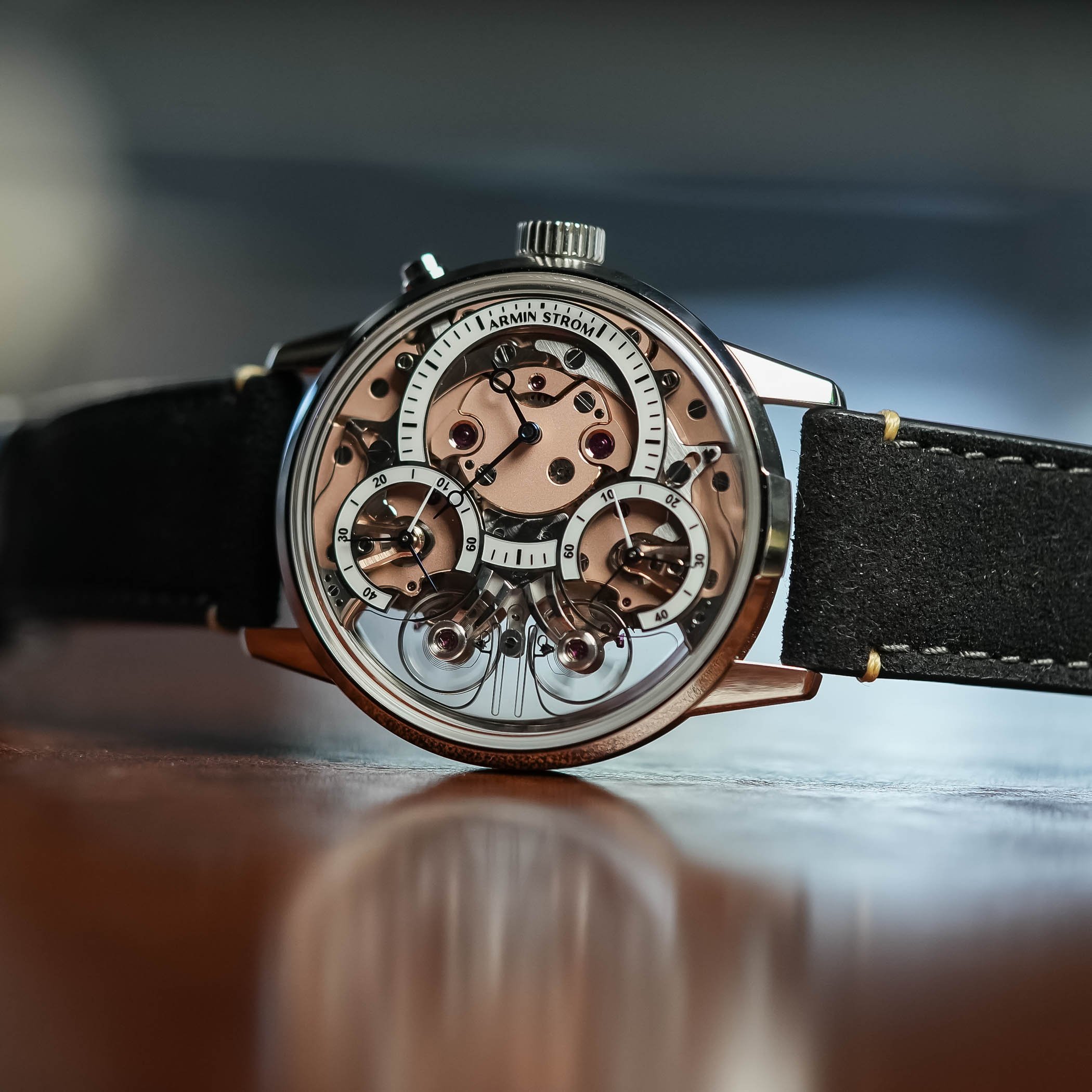

Although we won't repeat what resonance actually is, it was Christiaan Huygens who discovered it in 1665. In his studio, two of his pendulum clocks suspended from a wooden beam began to synchronize their beating rhythm. He learned that by placing two oscillating objects in close proximity, the two would mirror their frequencies and slowly begin to share what physicists call their “modes of motion.” But how can you capture it in a watch, let alone a wristwatch?
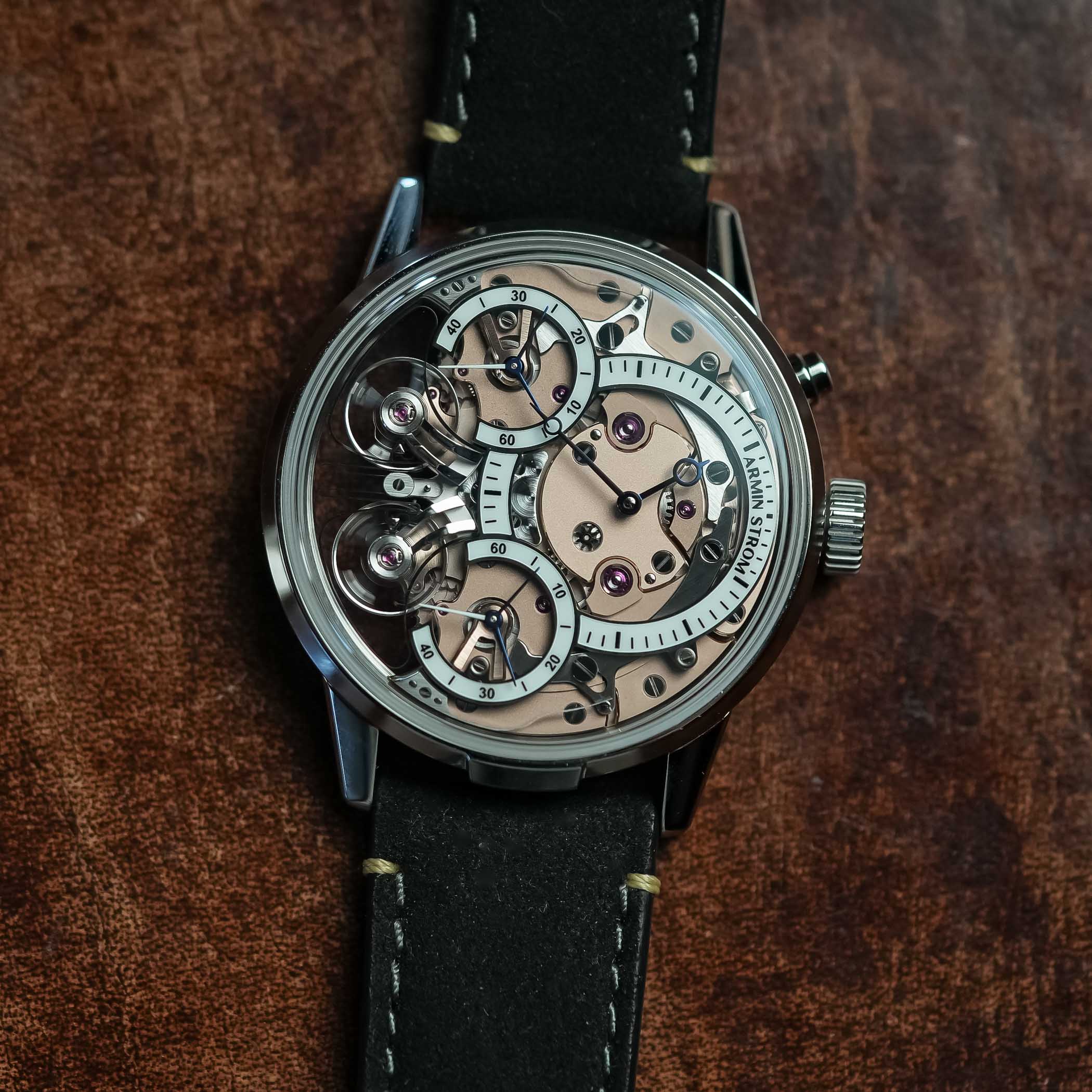

As previously mentioned, very few watchmakers have been brave enough to attempt to crack the codes of resonance in watchmaking. Among the historical names, Abraham-Louis Bregeut and Antide Janvier stand out, and in modern times François-Paul Journe was the first to revisit this concept. However, the solution for a stable and resilient resonance remained elusive until 2016, when Armin Strom's Claude Greisler introduced his first Mirrored Force Resonance. Inspired by the suspension system in Antide Janvier's resonance clock, the “MFR” came with a very special clutch spring!


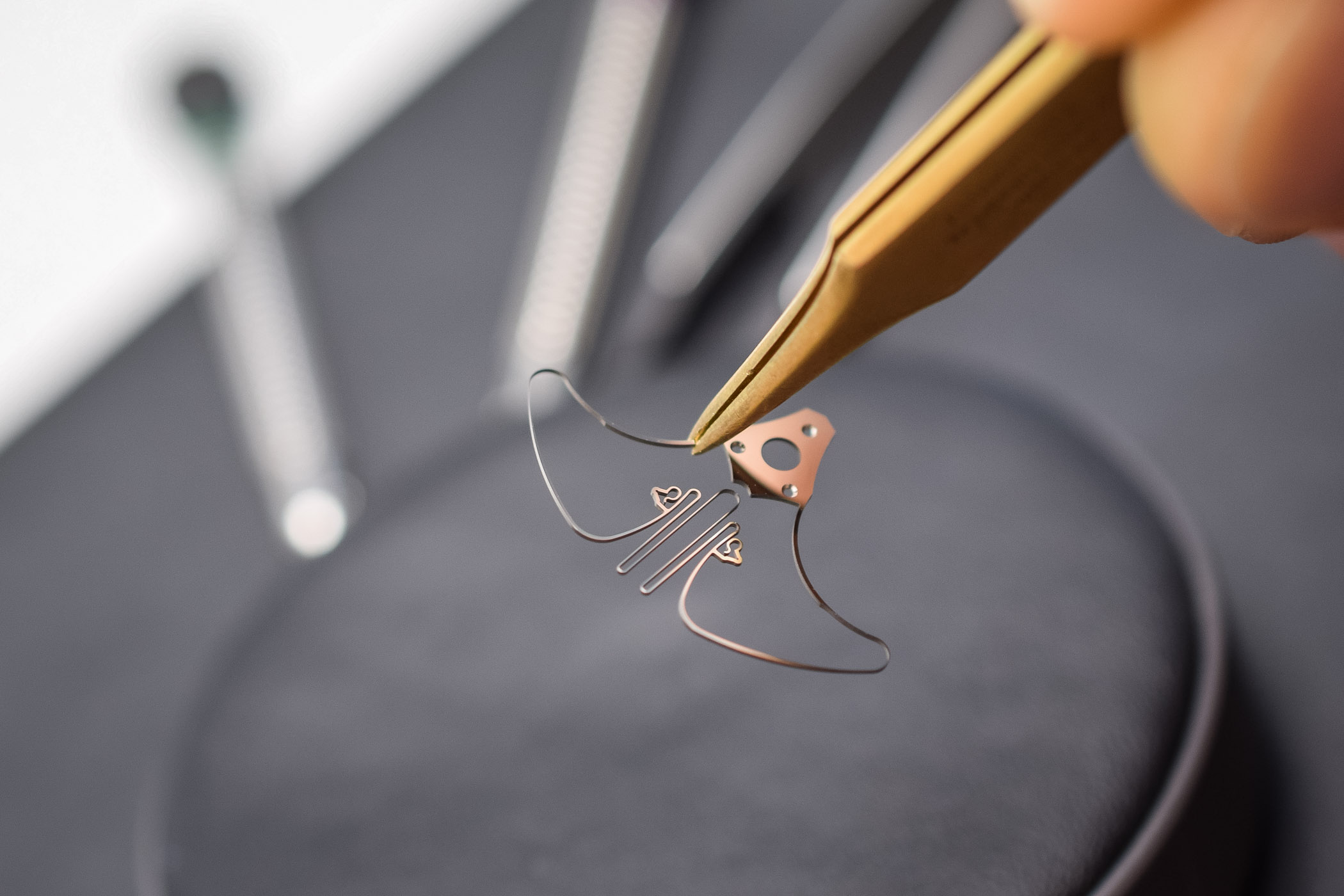

The clutch coupling increased the resonance effect
Zeitgeist 1665
The whole idea of this latest and perhaps greatest edition of Mirrored Force Resonance was to travel back in time to when Huygens first made his groundbreaking discovery. Claude Greisler wondered what a portable resonance clock would have looked like if something like this had been designed centuries ago and with the design rules of watchmaking of the time. This new zeitgeist in 1665 is the result of this imagination. It's a retro-futuristic design that combines the past, present and perhaps future in a watch that is best viewed through the stylistic lens of the 17th and 18th centuries.
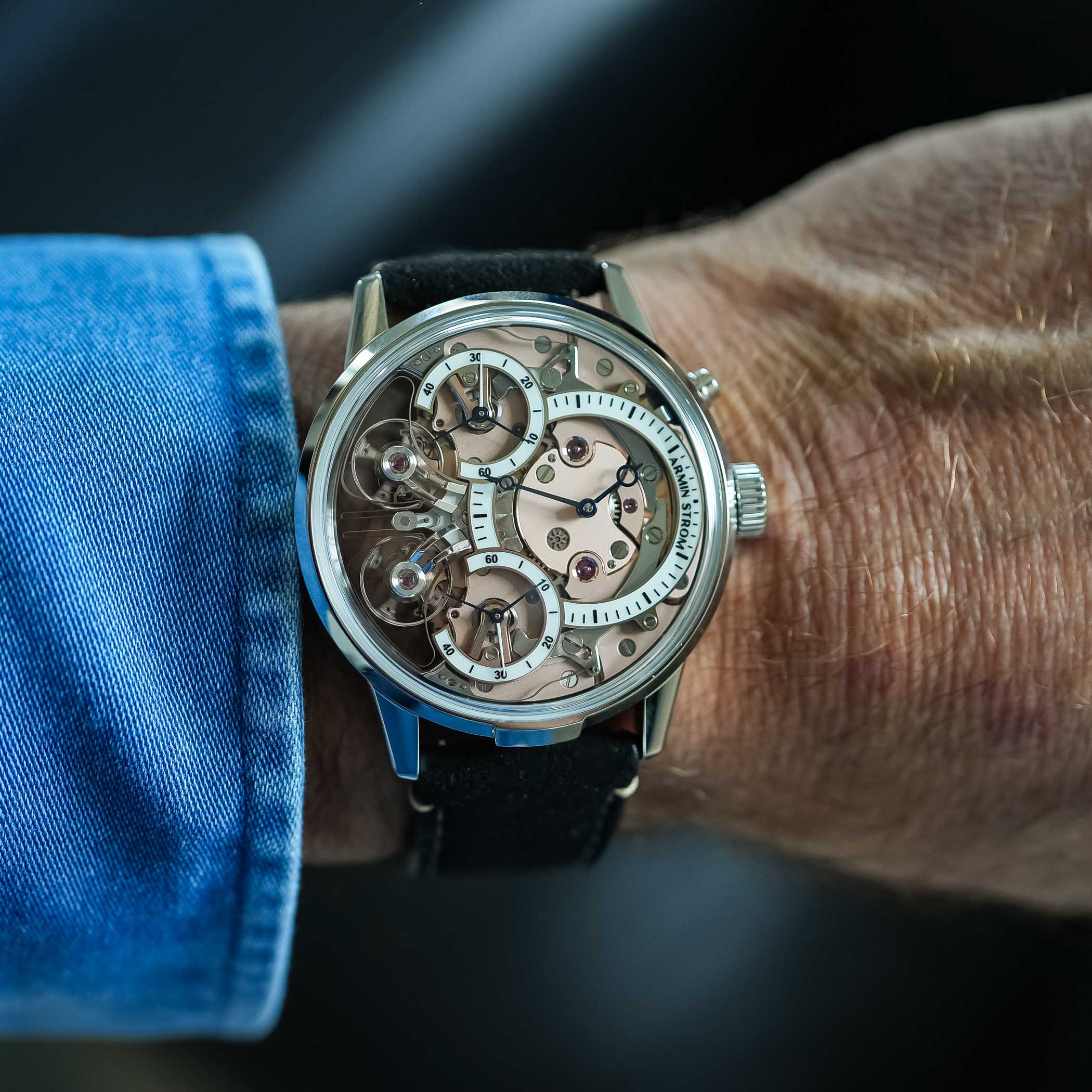

It has a stainless steel case with a width of 43 mm, a height of 11.5 mm and a lug of just under 50 mm. So not the smallest watch, but still very wearable. Important elements such as the sharply angled and faceted lugs, the bezel lip at 6 inches and the pusher next to the crown are all present. But it's only when you take a closer look at the details on the side of the dial and movement that things start to shift in a different direction.
The Zeitgeist 1665, similar to other Mirrored Force Resonance editions before it, does not rely on a classic dial. Instead, it features an offset dial for the hours and minutes, as well as two running seconds displays on the left side. On the Zeitgeist 1665, the hour and minute dial is almost completely open, so that even more of the movement underneath is visible. The 18k white gold rails are covered in, for lack of a better word, a creamy white polished lacquer. The hands, all made in-house by Armin Strom, are hot-blued over a flame, and the three-spoke seconds hand has a single painted spoke to match the rails on which it runs.
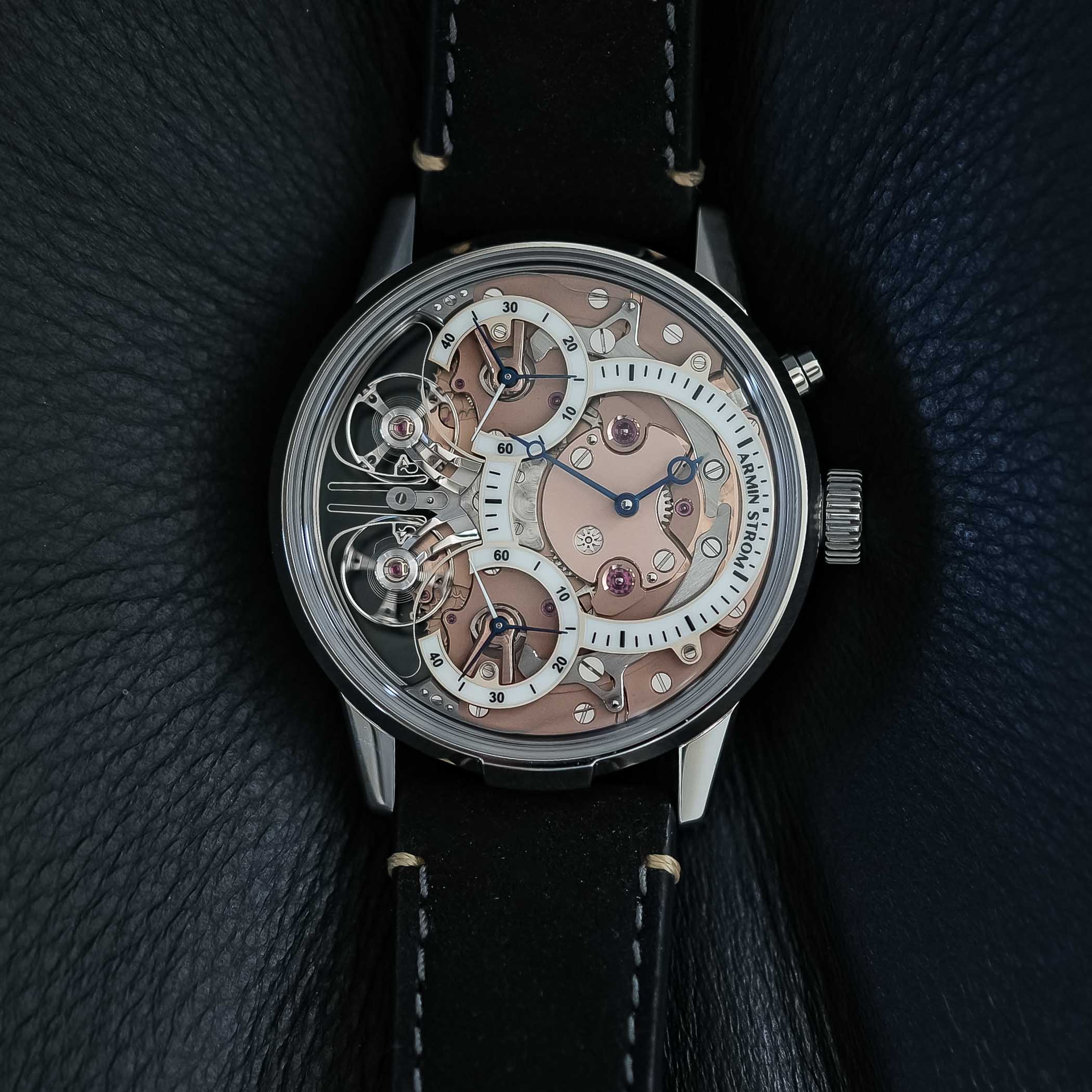

Bridge centuries
The unique display is made possible by the in-house caliber AFR21_ZG, which drives the zeitgeist. Armin Strom's solution to use the properties of resonance is clearly visible on the left side of the hand-wound movement. The two independent control systems, each with its own gear and barrel, are only connected by a special clutch spring. The rests vibrate in opposite directions, with the spring smoothing out irregularities between the two, allowing them to gradually synchronize their rhythm.
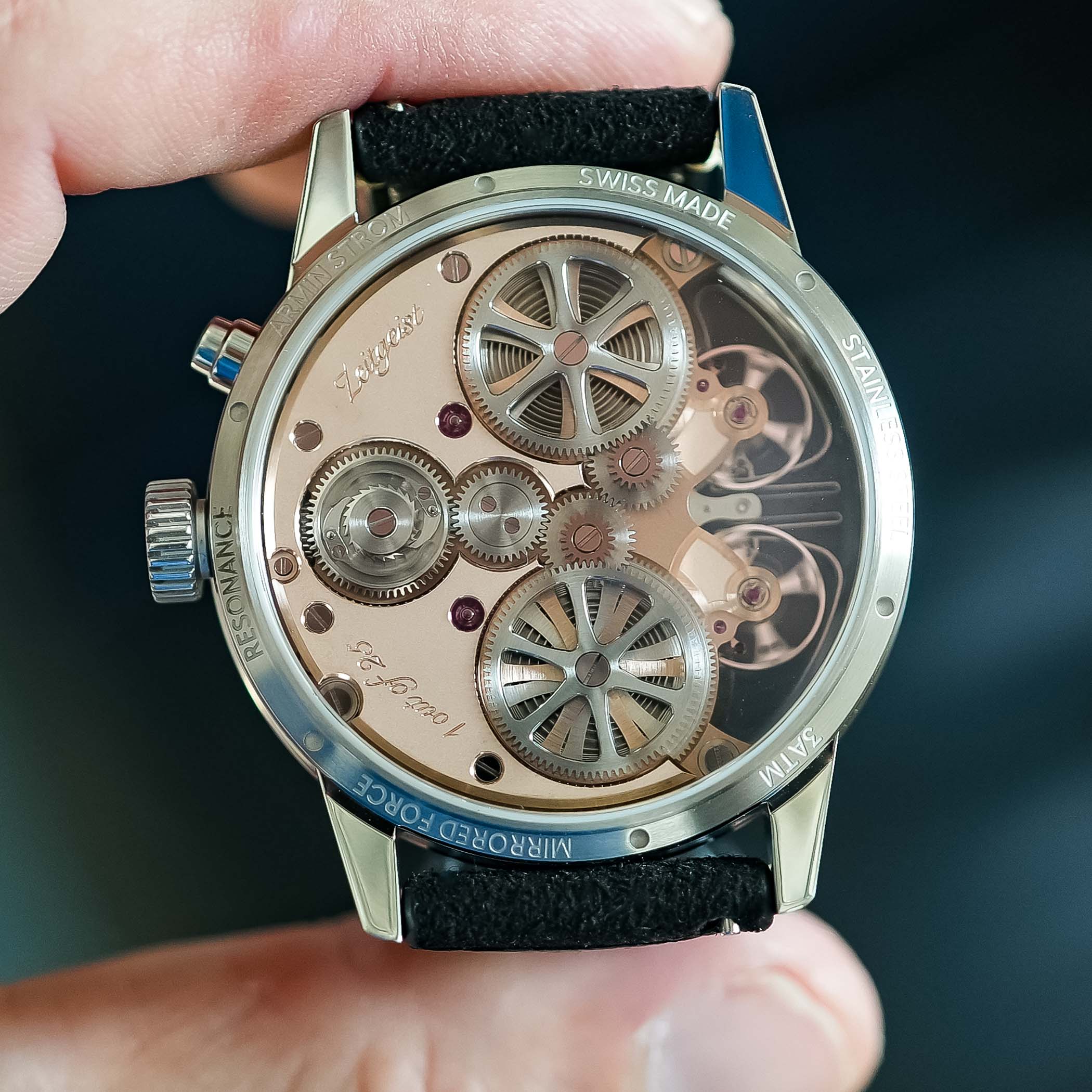

The two balance wheels are mounted on individual bridges, with the clutch spring constantly swinging back and forth. If the two are no longer in sync, this will be reflected in the running seconds sub-dials. However, simply pressing the button at 2′ resets the two running second hands. The movement itself runs at a speed of 25,200 vibrations per hour, which corresponds to 3.5 Hz. Thanks to the two-barrel system, it delivers a power reserve of up to 80 hours. And as we have come to expect from Armin Strom, everything is beautifully crafted.
All 260 parts of the movement, so even those you can't see receive the same care and attention. The main board and bridges have a fine-grain PVD coating made of matte rose gold. Then there are lots of hand-ground edges, black polished screws and different types of brushes to admire. The barrels are skeletonized, the unique click spring is fully visible and you have an unobstructed view of this fascinating clutch spring from both sides. Each movement is hand-engraved indicating that it is a Zeitgeist model, one from a very limited series.
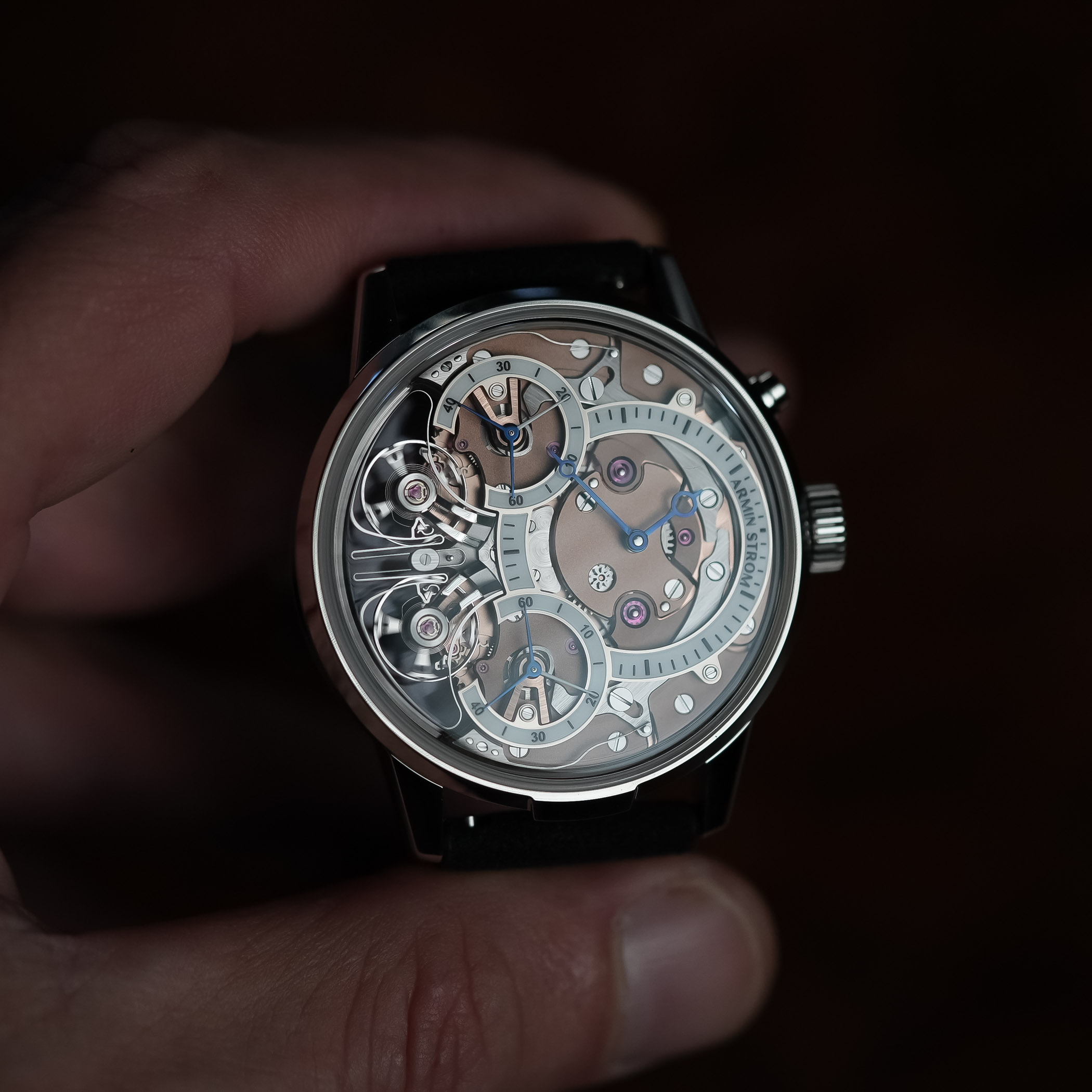

Price & Availability
The Armin Strom Mirrored Force Resonance Zeitgeist 1665 comes on a gray Alcantara strap with matching stitching, quick-release push pins and a steel pin buckle. It is limited to only 25 pieces and costs 82,000 francs before tax. Certainly a lot of money, but acceptable considering the technical performance, the uniqueness of the watch and the high quality of workmanship on display.
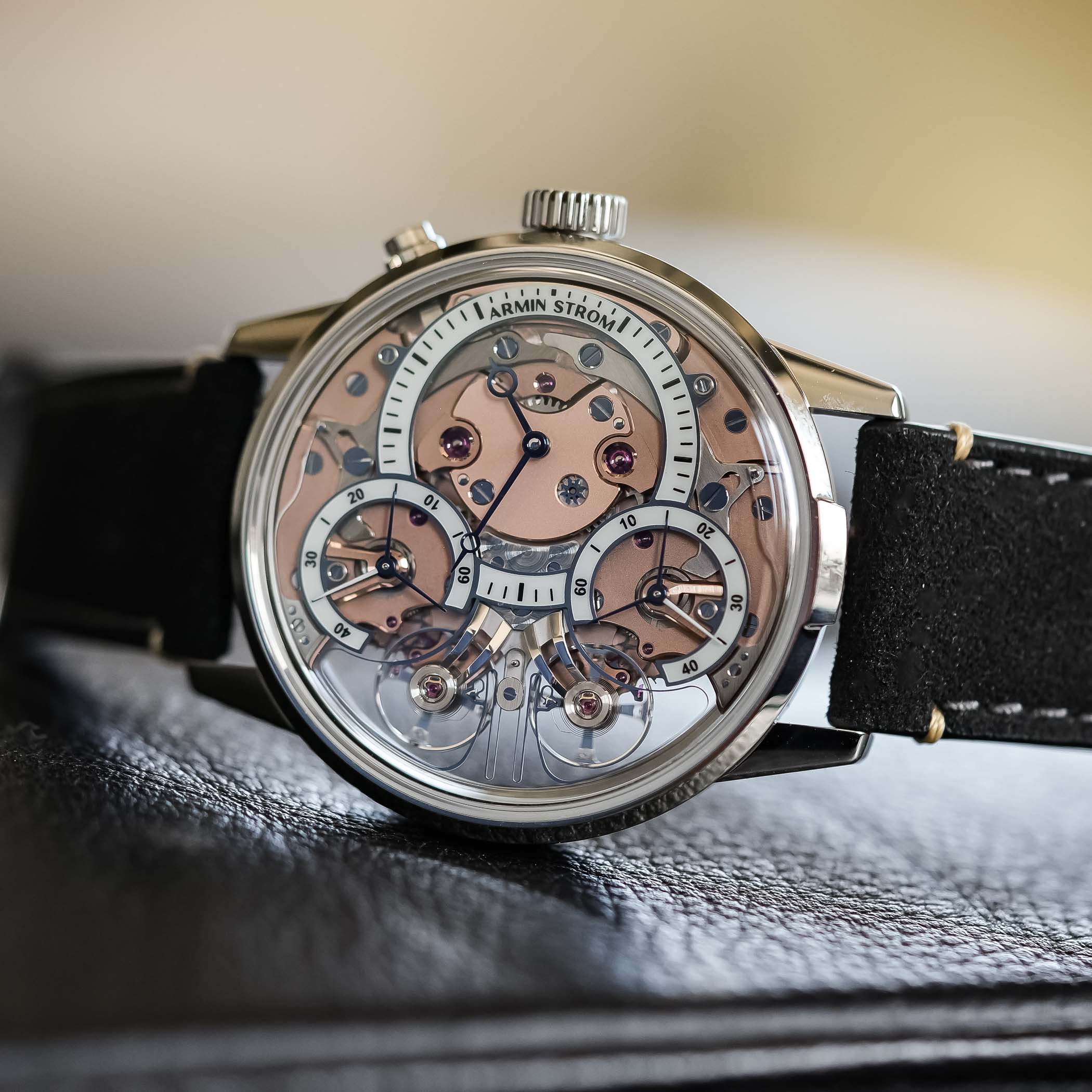

Admiring this up close is once again a testament to the brand's technical and aesthetic prowess. It is a beautiful ode to independent watchmaking and Christiaan Huygens' achievements in science and timekeeping. Its discovery, captured in a hypnotic three-body waltz of two oscillators and that remarkable clutch spring, makes it feel like a real watchmaking lesson on the wrist.
For more information, visit ArminStrom.com.
https://monochrome-watches.com/armin-strom-mirrored-force-resonance-zeitgeist-1665-price-video-review/